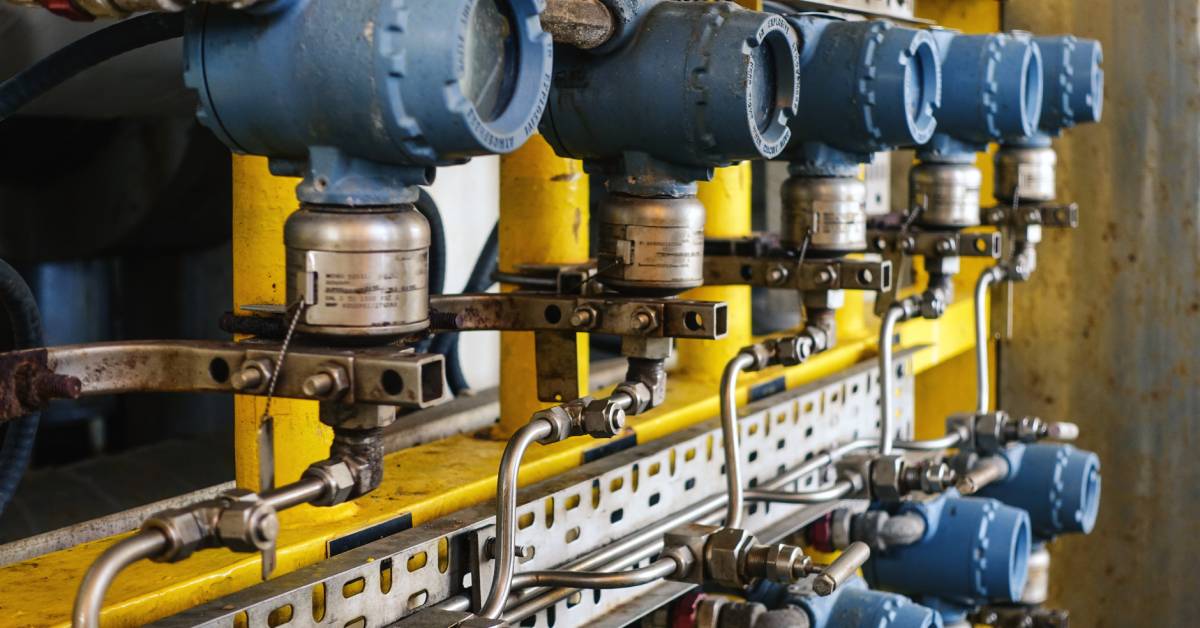18th Jun 2024
10 Data Points That the Oil Industry Tracks & Records
The oil industry relies heavily on accurate data collection. Gathered information must be precise for efficient enterprises, environmental protection, and safety compliance. Discover ten primary data points that the oil industry tracks and records for optimal outcomes. By understanding the details of these variables, oil industry professionals can achieve success.
Underground Reservoirs
1. Pressure
Reservoir pressure indicates the force exerted by the fluids within porous rock formations. Accurate pressure measurements establish optimal points for drilling as well as further the understanding of the reservoir's behavior.
Reservoir pressure is classified into two types: static pressure and dynamic pressure. Static pressure occurs to when the well is shut in, while dynamic pressure is recorded during active fluid flow. These measurements are essential for calculating the reservoir’s drive mechanism, which can be a water drive, gas cap drive, or solution gas drive.
Pressure data also aids in identifying potential risks such as blowouts, ensuring well control, and optimizing production rates. Advanced tools like pressure gauges, formation testers, and downhole pressure sensors are employed to gather precise data.
2. Temperature
Temperature affects the oil extraction process because it influences the physical properties of the reservoir fluids and the surrounding rock formations. Collecting temperature measurements is necessary for reservoir management and predicting the behavior of hydrocarbons under varying conditions.
Temperature variations affect the viscosity, density, and phase behavior of the fluids. For instance, higher temperatures can reduce the viscosity of crude oil, enhancing its flow characteristics. Lower temperatures may lead to increased viscosity, potentially impeding oil recovery efforts.
To measure temperature accurately, industry professionals use a variety of tools, including thermocouples, resistance temperature detectors, fiber optic sensors, and chart recorders. These instruments provide real-time temperature data, enabling better decision-making during drilling and production operations.
3. Fluid Composition
Fluid composition significantly impacts the selection of extraction methods and the design of separation and processing equipment. For example, the presence of high concentrations of hydrogen sulfide or carbon dioxide in the reservoir fluids necessitates the use of corrosion-resistant materials and specialized treatment processes.
Advanced techniques like gas chromatography, mass spectrometry, and nuclear magnetic resonance spectroscopy are employed to analyze fluid samples. These methods provide detailed insights into the chemical makeup of the reservoir fluids, facilitating accurate predictions of their behavior under different pressure and temperature conditions.

Production Data
4. Extraction
Extraction data encompasses the volume of crude oil derived from wells, the rate of extraction, and the geolocation of extraction sites. Seismic surveys, downhole sensors, and real-time monitoring systems including chart recorders collect this data.
The accuracy and timeliness of extraction data are critical for optimizing production schedules and ensuring resource sustainability. For instance, using chart recorders for real-time monitoring of extraction rates provides timely information that can prevent over-extraction, thereby avoiding premature well depletion and increased operational costs.
5. Processing
Once crude oil is extracted, it undergoes processing to separate it into various components, such as gasoline, diesel, and jet fuel. Processing data includes metrics such as throughput rates, refining yields, and efficiency ratios. The collected information is used to optimize refinery performance by identifying bottlenecks, reducing waste, and improving energy efficiency.
Environmental Data
6. Water Quality
Water quality monitoring involves parameters including pH levels, temperature, turbidity, and concentrations of contaminants such as hydrocarbons and heavy metals. Once collected, the samples are analyzed in laboratories equipped with advanced analytical tools that can detect even trace amounts of contaminants.
Maintaining high water quality standards is essential not only for complying with environmental laws but also for safeguarding aquatic ecosystems. Contaminated water may have devastating effects on marine and freshwater life, leading to loss of biodiversity and disruption of food chains.
Additionally, ensuring clean water helps in preventing soil contamination, which can have long-term adverse effects on agriculture and human health. Regular monitoring ensures that the water remains safe and complies with stringent environmental regulations.
7. Air Quality
Air quality data focuses on the concentration of pollutants like volatile organic compounds, sulfur dioxide, nitrogen oxides, and particulate matter. This data is collected using air monitoring stations equipped with sensors that measure pollutant levels in real time.
The oil industry must assess the impact of refinery operations on local air quality and public health. For example, tracking nitrogen oxide emissions assists refineries in implementing emission control technologies to minimize their environmental footprint and comply with air quality standards.
8. Emissions
Continuous monitoring devices like chart recorders are used to ensure compliance with regulatory agencies and minimize environmental impact. The oil industry uses emission data to develop strategies to reduce the carbon footprint of oil operations. Monitoring greenhouse gases, such as carbon dioxide, methane, and nitrous oxide, is crucial for extracting, processing, and distribution.

Safety Data
9. Injury Rates
The oil industry operates in a highly complex and demanding environment. Rigorous data recording ensures efficiency, safety, and regulatory compliance.
Tracking injury rates provides insights into the safety performance of an organization and helps identify areas where additional safety measures are needed. Injury data typically includes the number of incidents, the severity of injuries, the circumstances under which the injuries occurred, and the affected personnel's roles.
Effective tracking also encourages regulatory compliance. Regulatory bodies mandate the reporting of workplace injuries, and accurate data collection guarantees that companies meet these requirements. As a result, the entire industry can strengthen safety training programs and foster a culture of continuous improvement.
10. Equipment Failure
Blowout preventers, rotary drilling rigs, and other types of equipment are used daily on drilling operations. These machines and more are vital for safe and efficient operations. Therefore, monitoring equipment failure is crucial.
This data includes information about the frequency, type, and causes of equipment malfunctions. Some of the variables consist of equipment age, the conditions under which the failure occurred, and the components that malfunctioned. Systematically tracking incidents allows oil companies to identify recurring issues, evaluate the reliability of the machinery, and implement preventative maintenance measures.
The data points that the oil industry tracks and records make it possible to uphold operational safety and success. Recorders Charts and Pens has the supplies that the professionals in this industry need to accurately monitor elements including temperature, pressure, flow, and water and air quality.
Our company is a resource for purchasing machines, chart recorder paper, circular chart recorder pens, and more. With some of the top brands within reach, collecting and analyzing data will become more straightforward and precise.

